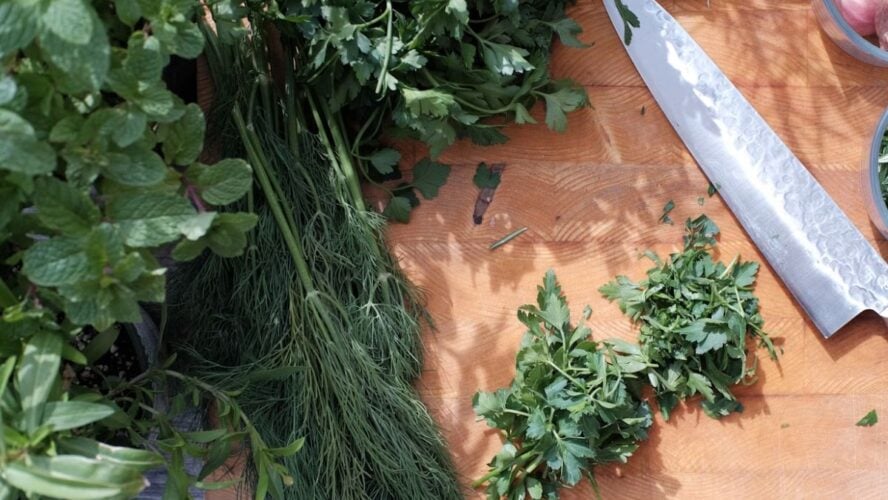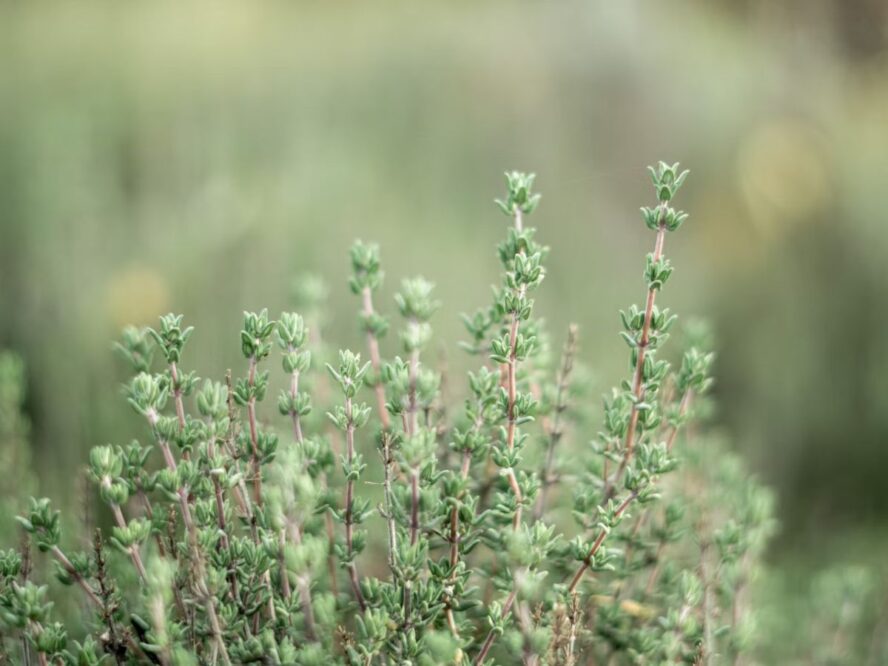6 Best Herbs to Grow for a Robust Italian Herb Garden

Take your Friday pizza night or Meatless Monday pasta extravaganza to the next level by using fresh herbs. Plant yourself an Italian herb garden and you can have aromatic plants on hand year-round. Here are six essential herbs to grow this season for your Italian garden to have some Mediterranean flair.
Sign up for the newsletter for more gardening tips and tricks.
1. Basil

Basil, known as the “queen of Italian herbs,” is the heart of pesto, pasta, tomato salads, and most other recipes in Italian cuisine. The herb also happens to be a superfood—the fresh herb treats headaches, tension, indigestion, coughs, and colds.
Basil is relatively simple to grow in the summer months; it just needs regular watering, excellent drainage, and rich, fertile soil. There are dozens of basil varieties to experiment with in your garden, so don’t stop at the common “sweet basil.” Try Thai basil, cinnamon basil, lemon basil, clove basil, or African Blue basil, just to name a few.
2. Oregano

Pizza sauce would just be tomato paste without oregano—the grassy, sweet, and incredibly aromatic herb completes most Italian dishes featuring eggs, tomatoes, or olives. When using dried oregano in your recipes, rub the herb slightly in your hands to release its full aroma and flavor. Also, cook it in oil to release those essential oils inside (never add dried oregano at the end of a recipe—only fresh oregano leaves).
Oregano prefers to grow in areas that mimic the Mediterranean environment—well-drained, slightly limey soils with ample sunlight and good drainage. It grows very well in pots and usually requires little care.
3. Italian Parsley

You’ve seen two types of parsley at the supermarket: the flatter type that looks a bit like cilantro, and the bushier, curlier parsley. Italian parsley is the flat-leafed of the two, and it has a more distinct, robust flavor with a bright, clean flavor.
Parsley is not only an essential for your Italian herb garden, but some people consider it an essential everyday herb. Add the chopped fresh leaves to virtually any salad, soup, pilaf, casserole, roast, or pasta—it really complements most savory flavors and ethnic cuisines from around the world.
Parsley grows easily in different environments and does especially well potted, so it’s a really easy addition to any home garden—just make sure it gets at least 4-6 hours of moderate sunlight each day.
4. Rosemary

Rosemary is an herb whose taste reflects its growing patterns—a bit sturdy and hardy with a robust flair. It has a very strong flavor that some people feel they don’t like, but this is often simply because there is too much of the herb in the recipe, and the flavor is overpowering. Go lighter than you think when adding rosemary to recipes, especially when using the dried herb, which has an even more concentrated flavor.
The oils inside rosemary are incredibly healthful. They fight allergies, asthma, and inflammation, and reduce the carcinogens that form when grilling food, so add it to rubs, marinades, and seasoning mixes for anything you toss on the grill this season.
Rosemary can grow year-round as long as temperatures don’t dip down into single digits. They thrive off of bright sunlight, good drainage, and regular pruning.
5. Thyme

This Mediterranean herb is not common for American home cooks unless their recipes specifically call for it. This is too bad, because the tiny plant adds a delightful element of floral sweetness to dishes both sweet and savory.
It pairs well with all summer foods and plants, like eggs, garden vegetables, fish, citrus, cheeses, and fruits. Fresh thyme loses its delicate aroma and flavor under heat, so add it at the end of cooking. Thyme is delicate in flavor and can be fragile to grow.
6. Fennel

Prized by some and despised by others for its characteristic sweet, anise-like flavor, fennel is an absolute must for the Italian kitchen. The feathery fronds are a finishing herb for salads, sauces, and roasts, while the celery-like bulbs are a common side dish, often served alongside fish or roasted meats. Fennel is fabulous alongside sweet Italian cookie recipes like biscotti or tarts, or added to soft cheese and herb dishes.
Fennel grows well in dry, sunny environments (it grows prolifically in Southern California), and it can be slow to start from seed. Once planted firmly, though, a happy fennel plant will grow well and attract many birds, bees, and butterflies into your garden.
Read More on Organic Authority

Ooh-La-La! 8 Vegetables to Plant for a Truly French Garden
8 Ancient Medicine Cure-Alls: Can Our Ancestors Heal Modern Illnesses?
7 Easiest Herbs to Grow in Your Apartment Garden [With Expert Advice From Pros]

